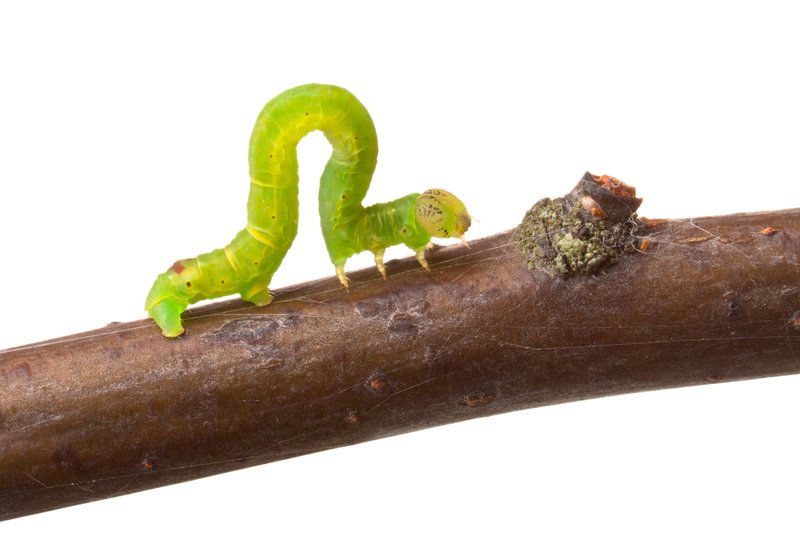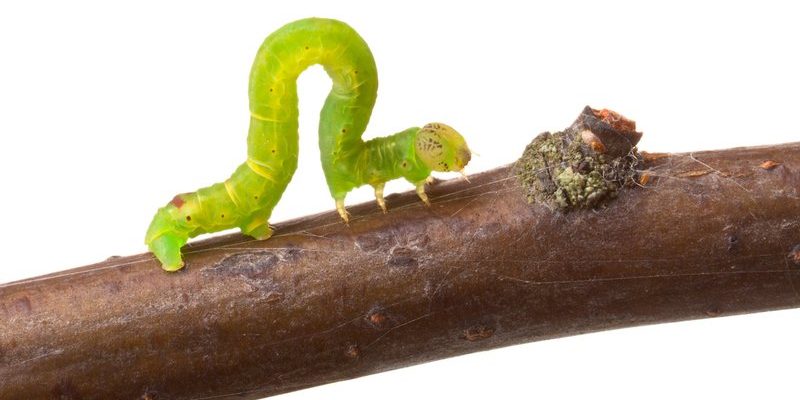
Imagine you’re sipping coffee with a friend, chatting about your garden. You mention seeing a few inchworms, and they get all excited. “Oh, I love those!” they exclaim. “They’re so good for the soil!” But before you know it, another buddy pipes up with, “Yeah, but they can ruin your vegetables if you’re not careful!” People seem to have strong opinions on these little guys, and understanding whether inchworms are beneficial or pests in agriculture can help us appreciate their role in nature.
What Exactly Are Inchworms?
Inchworms, often seen during the warmer months, are the larvae of moths from the Geometridae family. These tiny creatures measure about one to two inches long and move in a distinctive way that seems like they’re measuring the ground—hence the name “inchworm.” They can be green, brown, or even patterned, allowing them to blend in beautifully with their surroundings.
You might be wondering, “Why do they move this way?” Well, inchworms don’t have the same kind of legs as other caterpillars. They use a unique looping motion to inch along, which can make them seem even more like a little piece of nature’s performance art. This movement is not just quirky; it’s also a way for them to avoid predators by staying low to the ground.
While most inchworms are harmless, they can be a nuisance when they feast on the wrong plants. So, let’s take a closer look at what they eat and their impact on agriculture.
Inchworms: Friends or Foes?
The debate over whether inchworms are beneficial or pests centers around their eating habits. On one side, they munch on various leaves and plants, which means they can help control certain types of vegetation in gardens and forests. In smaller numbers, they can even contribute to a balanced ecosystem by providing food for birds and other wildlife.
However, when their populations explode, inchworms can become a real headache. They may devour entire crops, causing losses that can be devastating for farmers. For instance, a field of young corn can become a lunch buffet overnight. This leads to the question: How do we manage their populations without harming the environment?
The Life Cycle of Inchworms
To understand inchworms better, let’s break down their life cycle. It starts when a female moth lays eggs on the leaves of a plant. Once the eggs hatch, the tiny inchworms emerge and begin their feast. This phase lasts just a few weeks, during which they grow rapidly.
After they’ve munched enough, they’ll find a safe spot to spin a cocoon, transforming into pupae. This stage can last from a few weeks to several months, depending on the species and environmental conditions. Eventually, they emerge as adult moths, ready to start the cycle all over again. Understanding this cycle can help farmers make informed decisions about controlling their population.
How Do Inchworms Affect Agriculture?
The effects of inchworms on agriculture can vary significantly based on their population size. In smaller amounts, they can act as a natural pruning agent, trimming back overgrown areas. This can help promote healthier, more robust plant growth.
However, when inchworm populations surge, the damage can be significant. For example, they tend to target tender young shoots, leading to reduced yields in crops. Farmers may notice their hard work being undone in just a few days.
If you’re a farmer facing an outbreak, it’s crucial to identify them early. Regular inspections of crops can help catch any signs of munching before it gets out of hand. And let’s not forget about pesticide use, which can help manage inchworm populations, but it’s a balancing act to keep beneficial insects safe too.
Natural Predators of Inchworms
Interestingly, nature has equipped us with various natural allies in the fight against inchworms. Birds, particularly, love to feast on these little larvae. Introducing more bird-friendly environments—like planting native trees and creating nesting areas—can help keep inchworm populations in check.
You might also consider using certain beneficial insects, such as parasitic wasps or predatory beetles, to help. These creatures target inchworms specifically, reducing their numbers without harming your plants. It’s like having a natural pest control team right in your garden!
Managing Inchworm Populations
If you find yourself dealing with too many inchworms, there are several strategies you can employ to manage their populations effectively.
- Regular Monitoring: Keep a close eye on your plants, especially during the spring and early summer when inchworm populations tend to peak. Early identification can save you a lot of heartache later on.
- Hand-Picking: If you catch them early, hand-picking can be surprisingly effective. Just be careful and check both sides of the leaves!
- Natural Remedies: Sprays made from neem oil or insecticidal soaps can deter inchworms without harming beneficial insects.
- Encourage Natural Predators: Create a bird-friendly environment and let nature do its work by attracting those natural predators.
Using these methods, you can keep inchworm populations under control while minimizing the impact on your crops and the environment.
So, are inchworms friends or foes in agriculture? The answer really depends on the situation. They can offer some benefits, like keeping certain plants in check and serving as food for wildlife. But when they ramp up in numbers, they can wreak havoc on your hard-earned crops.
Ultimately, understanding their role in the ecosystem allows you to make better choices for both your garden and the environment. By using careful management and respecting the balance of nature, you can appreciate these little creatures while protecting your plants. Remember, every creature plays a role in the grand tapestry of life, and it’s all about finding harmony among them.

